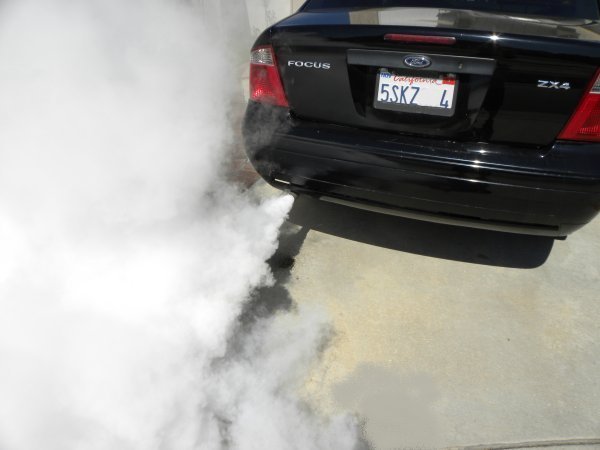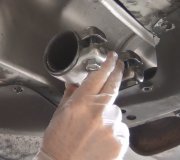Yup. The symptoms are contradictory. When a coil or plug misfires, the unburned mixture goes into the exhaust system. The unburned fuel should be mixed with stored oxygen in the catalytic converter, and burned so you shouldn't smell anything, ... Yet.
The oxygen sensor doesn't respond to unburned gas, just unburned oxygen. The computer is constantly varying the mixture from too rich to too lean a couple of times per second, (that's where the converter gets the oxygen to store momentarily). With that misfire, it sees that oxygen all the time and figures the average mixture is too lean, so it adds fuel to correct that. The problem is no matter how much fuel it adds, there will still always be that unburned oxygen being detected. THAT's when the converter gets overwhelmed and you smell unburned gas at the tail pipe. You smell gas, but he computer sees a lean condition and tries to add more gas. That's the contradiction.
Most V-type engines, '96 and newer have oxygen sensors on each half of the engine so a misfire in one cylinder results in fuel being added to all three or four cylinders on that side. Older engines usually had one oxygen sensor. A misfire ended up with fuel being added to all cylinders.
There's two possible explanations for why the smoke occurs well after start-up. The cylinder heads and gaskets expand when they get to normal operating temperature. It could be that's when a leak shows up. It's also possible for system pressure to cause coolant to seep into a cylinder after the engine is stopped. If it's excessive, that can cause "hydro-lock". Since liquids don't compress, that fluid can stop a moving piston and cause a no-start, (no crank) condition. If, on the other hand, a valve is open when you start cranking, the liquid can be pushed into the exhaust system where it will vaporize after the exhaust system gets hot. That will take a few minutes. Some of the coolant will spray out of the tail pipe right away as a liquid. It won't smoke until it gets hot. That liquid can collect in the muffler which takes longer to get hot enough to vaporize the coolant.
One problem with my analysis is: "i checked for the antifreeze going down and no change". With the amount of smoke you're describing, you should be losing a lot of coolant. Next, "i found puddle thought it was water also till I put finger in it and smelled it, was gas". We know something is going on with cylinder number 6 but gas won't wash it clean; coolant will. A better way to tell if gas is dripping from the tail pipe is to wait and see what happens to the puddle. Water will still be there an hour later but it can easily smell like gas if there was a little in it. Gas will evaporate in a matter of minutes and leave a stain on blacktop or concrete.
Sunday, March 11th, 2012 AT 5:13 PM



